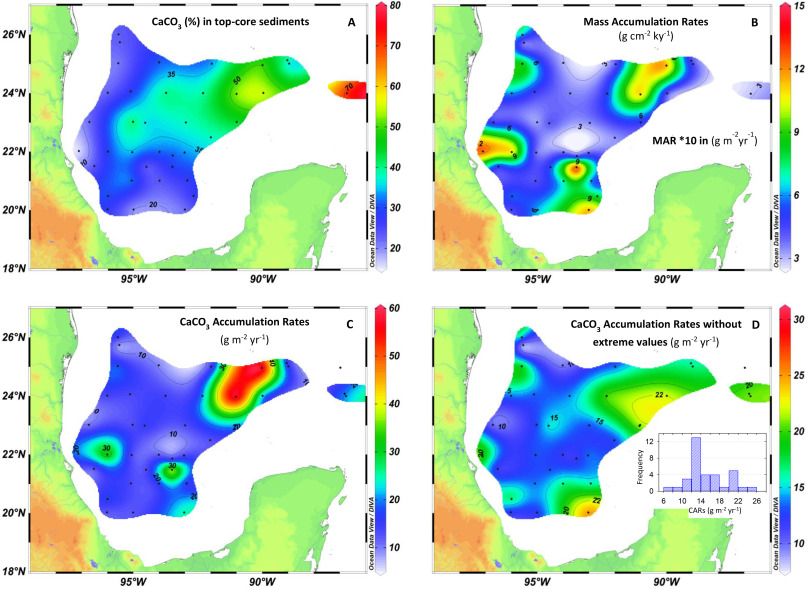Authors: Misael Díaz Asencio, Juan Carlos Herguera, Felipe García Romero & Patrick Rafter
https://doi.org/10.1016/j.margeo.2023.107131
Abstract: Here we present the mass and carbonate annual fluxes, collected by two sediment traps at 1000 m depth, located on the western and southern deep-water region of the Gulf of Mexico (GM), and compare them with the total mass and carbonate accumulation rates (CAR) from 46 sediment cores retrieved from continental slopes and the abyssal plain of the southern Gulf of Mexico (sGM). CaCO3 fluxes in the sediment traps located close to 1000 m water depth, range between 15.1 and 22.4 g m−2 yr−1, these values fall on the high-end range of the mean fluxes reported for the global ocean (9–22 g m−2 yr−1). The carbonate fluxes from the water column are remarkably close to the CAR in the lower slope and abyssal sediments of the southern GM, implying that dissolution processes of biogenic carbonate in the sediments below 1000 m are negligible in the sGM. The spatial patterns of CARs in the sediments are mainly linked with surface productivity of calcareous organisms and export to depth over the continental slope and abyssal plain regions, with mean values of 15.7 ± 5.7 g m−2 yr−1 (0.15 ± 0.06 mol m−2 yr−1). However, there are some large areas over the abyssal plain to the north of the Campeche escarpment showing enhanced CAR values most likely as a result from two processes, lateral input from the Yucatan carbonate shelf region and massive collapse events originating at the Campeche escarpment and deposited to the north of the Yucatan Platform. These processes can account for an additional increase in carbonate mass accumulation by approximately 8 g m−2 yr−1 in this area, showing a decreasing gradient towards the N of the escarpment. Lateral transport by turbidity currents of carbonate platform sediments along submarine canyons and probably episodic gravity flows further aid to explain the localized higher carbonate mass accumulation (> 20 g m−2 yr−1) observed at the foot of the continental slopes to the west and south of the southern GM. We estimate total carbonate accumulation estimates for the entire Gulf of Mexico, from the upper slope to the abyssal plain (1000–3750 m), considering the northern deep-water region reported by Giering et al., 2018, of 0.09 to 0.12 Tmol/yr accounts for 0.8 to 1.8% of all carbonate sedimentation in the ocean below 1000 m. Taking into considerations its small areal extent of <0.3% of the global ocean the GM carbonate accumulation accounts for a factor of 3 to 6 its areal importance, implying that changes in the production and export of carbonate in the GM due to surface ocean warming and acidification processes in this inland sea will have a sensible effect in the global carbon cycle.
Keywords: The Gulf of Mexico; AMS 14C stratigraphy; Carbonate fluxes; Sediment traps; Carbonate accumulation rates; Deep-sea sediments


Comentarios recientes